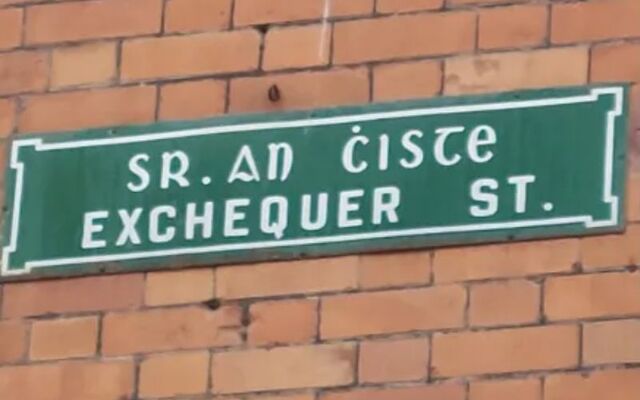The public are being asked to help document and preserve Dublin’s old bilingual street signs with their unique Gaelic typeface, which are fast disappearing from the Capital’s streets, as part of a new digital humanities project led by Trinity College Dublin.
The distinctive green-and-white street signs date from around 1901, when the Municipal Council of Dublin voted to install bilingual signs. These signs feature street names in both English and Irish, with the Irish language version written in traditional Irish script known as cló gaelach.
“These street signs are an important part of our cultural heritage. Cló gaelach letterforms have been used to write Irish and Latin as far as back as the sixth century and is the script used in Irish manuscripts as well as on shop and pub fronts and our distinctive old street signs,” explains Dr Nicole Volmering, School of Histories and Humanities, who is leading the CLÓSCAPE research project.
“When the Irish state was founded, there was huge pressure to use Gaelic in educational materials, on street signs, in books as a symbol of reinforcing Irishness in Ireland. But long before that, this Irish font was used as a form of ‘silent rebellion’ against British rule on green and white Dublin street signs.”
Now, members of the public are being asked to contribute photographs, past and present, of old Dublin street signs to a new digital history research project that is working to preserve Irish street signs with Irish font. Historic photographs in particular,r are extremely valuable to the project.
The pilot project is focusing on Dublin initially, but it is hoped that a larger national survey will be undertaken in the future. To date, the project has collected some 600 photographs of street signs from Dublin’s inner city.
Read more
“Little is known about the roll-out or distribution of these beautiful signs. This project aims to collect photographic evidence of the signs, past and present, to reconstruct the historic placement of Irish typeface signs and to preserve them in digital form for future generations.
“Despite their historic significance, the cló gaelach signage is not protected or preserved outside of architectural conservation areas. Many signs are subsequently replaced by modern blue and white signs with Roman font, with no provision for the use of cló gaelach in the current Official Languages Act.
“Every time we lose a sign, we lose a little bit of the history of Dublin and the history of Irishness.”
Funded by the Trinity Long Room Hub Research Incentive Scheme, CLÓSCAPE will collect photographic evidence of signs, past and present. The photos will be published as part of the Irish Historic Street Signs Archive on the Digital Repository of Ireland, making this important part of our unique cultural heritage freely available to the public and researchers.
To find out more and to contribute photos, visit the CLÓSCAPE site.




Comments